Neal N. Xiong
An Efficient Style Virtual Try on Network for Clothing Business Industry
May 30, 2021
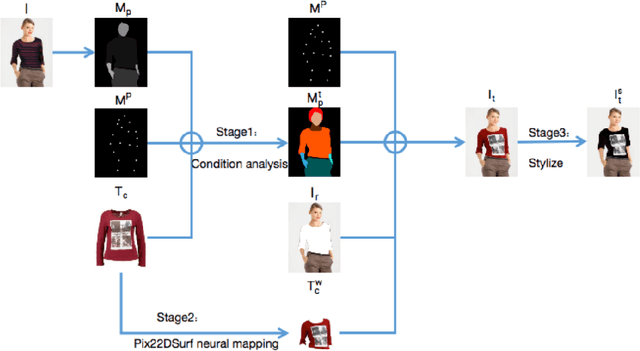


Abstract:With the increasing development of garment manufacturing industry, the method of combining neural network with industry to reduce product redundancy has been paid more and more attention.In order to reduce garment redundancy and achieve personalized customization, more researchers have appeared in the field of virtual trying on.They try to transfer the target clothing to the reference figure, and then stylize the clothes to meet user's requirements for fashion.But the biggest problem of virtual try on is that the shape and motion blocking distort the clothes, causing the patterns and texture on the clothes to be impossible to restore. This paper proposed a new stylized virtual try on network, which can not only retain the authenticity of clothing texture and pattern, but also obtain the undifferentiated stylized try on. The network is divided into three sub-networks, the first is the user image, the front of the target clothing image, the semantic segmentation image and the posture heat map to generate a more detailed human parsing map. Second, UV position map and dense correspondence are used to map patterns and textures to the deformed silhouettes in real time, so that they can be retained in real time, and the rationality of spatial structure can be guaranteed on the basis of improving the authenticity of images. Third,Stylize and adjust the generated virtual try on image. Through the most subtle changes, users can choose the texture, color and style of clothing to improve the user's experience.
IUP: An Intelligent Utility Prediction Scheme for Solid-State Fermentation in 5G IoT
Mar 28, 2021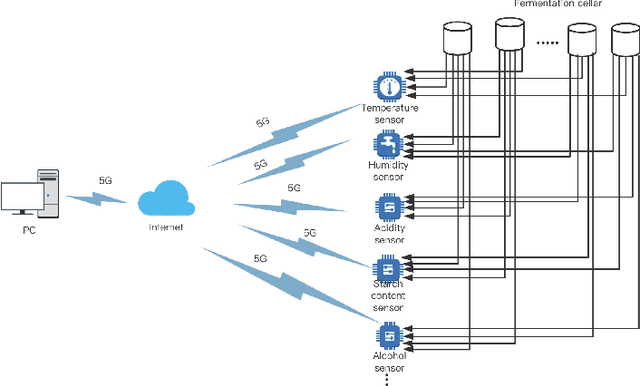
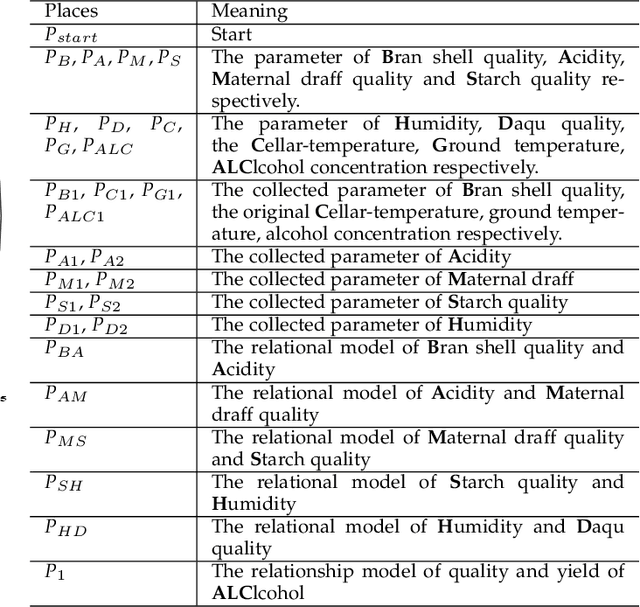
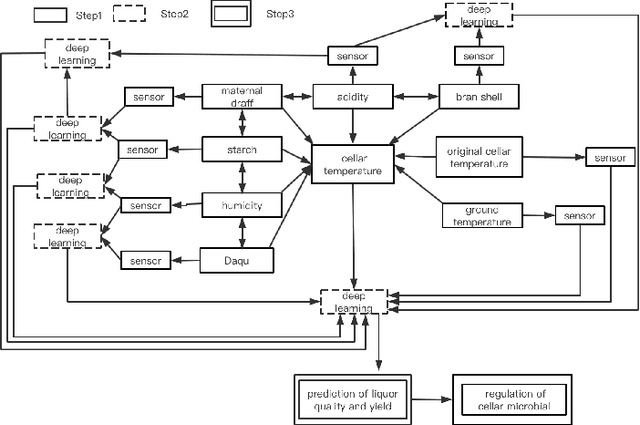

Abstract:At present, SOILD-STATE Fermentation (SSF) is mainly controlled by artificial experience, and the product quality and yield are not stable. Accurately predicting the quality and yield of SSF is of great significance for improving human food security and supply. In this paper, we propose an Intelligent Utility Prediction (IUP) scheme for SSF in 5G Industrial Internet of Things (IoT), including parameter collection and utility prediction of SSF process. This IUP scheme is based on the environmental perception and intelligent learning algorithms of the 5G Industrial IoT. We build a workflow model based on rewritable petri net to verify the correctness of the system model function and process. In addition, we design a utility prediction model for SSF based on the Generative Adversarial Networks (GAN) and Fully Connected Neural Network (FCNN). We design a GAN with constraint of mean square error (MSE-GAN) to solve the problem of few-shot learning of SSF, and then combine with the FCNN to realize the utility prediction (usually use the alcohol) of SSF. Based on the production of liquor in laboratory, the experiments show that the proposed method is more accurate than the other prediction methods in the utility prediction of SSF, and provide the basis for the numerical analysis of the proportion of preconfigured raw materials and the appropriate setting of cellar temperature.
DSP: A Differential Spatial Prediction Scheme for Comprehensive real industrial datasets
Aug 23, 2020



Abstract:Inverse Distance Weighted models (IDW) have been widely used for predicting and modeling multidimensional space in multimodal industrial processes. However, the more complex the structure of multidimensional space, the lower the performance of IDW models, and real industrial datasets tend to have more complex spatial structure. To solve this problem, a new framework for spatial prediction and modeling based on deep reinforcement learning network is proposed. In the proposed framework, the internal relationship between state and action is enhanced by reusing the state values in the Q network, and the convergence rate and stability of the deep reinforcement learning network are improved. The improved deep reinforcement learning network is then used to search for and learn the hyperparameters of each sample point in the inverse distance weighted model. These hyperparameters can reflect the spatial structure of the current industrial dataset to some extent. Then a spatial distribution of hyperparameters is constructed based on the learned hyperparameters. Each interpolation point obtains corresponding hyperparameters from the hyperparametric spatial distribution and brings them into the classical IDW models for prediction, thus achieving differential spatial prediction and modeling. The simulation results show that the proposed framework is suitable for real industrial datasets with complex spatial structure characteristics and is more accurate than current IDW models in spatial prediction.
Towards Class-incremental Object Detection with Nearest Mean of Exemplars
Aug 19, 2020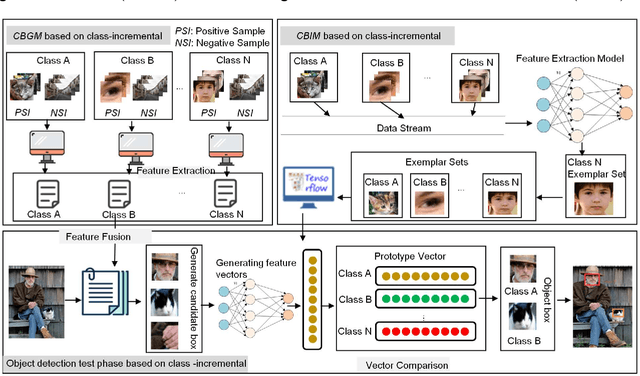
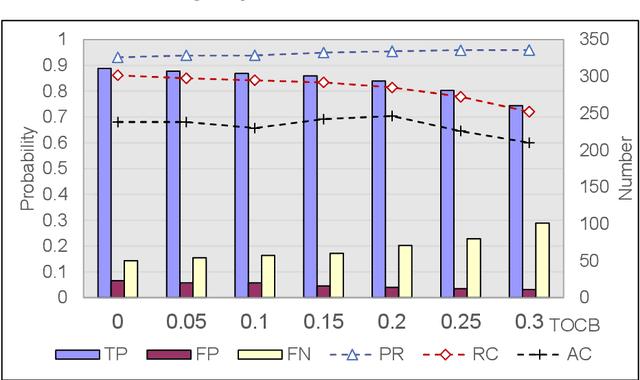
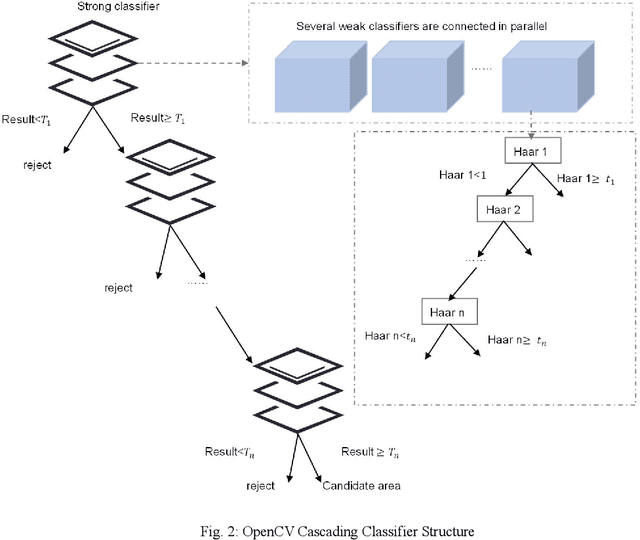
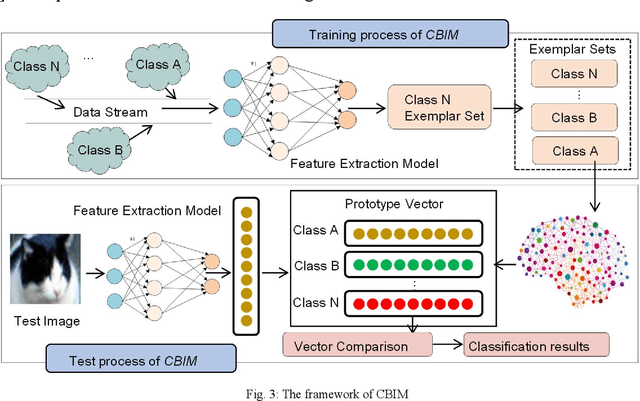
Abstract:Object detection has been widely used in the field of Internet, and deep learning plays a very important role in object detection. However, the existing object detection methods need to be trained in the static setting, which requires obtaining all the data at one time, and it does not support training in the way of class-incremental. In this paper, an object detection framework named class-incremental object detection (CIOD) is proposed. CIOD divides object detection into two stages. Firstly, the traditional OpenCV cascade classifier is improved in the object candidate box generation stage to meet the needs of class increment. Secondly, we use the concept of prototype vector on the basis of deep learning to train a classifier based on class-incremental to identify the generated object candidate box, so as to extract the real object box. A large number of experiments on CIOD have been carried out to verify that CIOD can detect the object in the way of class-incremental and can control the training time and memory capacity.
 Add to Chrome
Add to Chrome Add to Firefox
Add to Firefox Add to Edge
Add to Edge